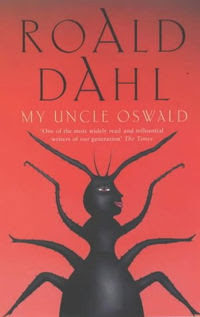There are several ways that companies in other traditional industries can use social media to their advantage. We have used the following tools to increase our profile amongst our target market:
1. Blog. While time consuming to maintain, our blog has been an important part of how current and prospective clients relate to the company. I have learned a few important rules along the way as to how to maintain a good corporate blog.
a. Do not use your blog as a product advertising tool. Think of your blog like a respected newspaper like the New York Times where editorial interests are separate from the business interests that underwrite the publication. No one would read the Times if the articles were shameless plugs for their advertisers. Readers expect analysis, commentary and a perspective, not a sales pitch.
The content of our blog is focused on positive customer experiences. This is central to how we do business, which is why we focus on this theme on our blog. Many of our entries are irreverant and humorous - and each offers a unique perspective.
b. Have fun. One of our company values is to "have fun". We have fun when we interact with our clients in person, over the phone and in our online setting. We present our thoughts and philosophies on the blog as we really want our clients to know more about what makes us tick.
2. Online video - we created a comedy sketch on youtube.com which makes fun of our industry. I think that the ability to have fun and have a joke at your expense is a key rapport building exercise between you and your audience.
3. Product Comments and Ratings. We encourage the good, bad and ugly. Not everything is a winner and we want our community to know what works and what doesn't. There is no point in hiding from something that doesn't work as a marketing tool - as this client felt in their review. Conversely, when products work, the community is drawn to the winners.
4. Aligning ourselves with web properties that our clients identify with. In our case, we have used:
i. Facebook to allow clients to share products via the web's hottest social networking site. We also have a rightsleeve.com fan page and group where "fans" can keep tabs on us via facebook.
ii. Flickr as a forum to post office pictures which gives clients an insight into who we are.
iii. You Tube as a forum to post videos on what makes our office tick.
5. Own your content by building your own web site. A number of companies take short cuts by using white label web sites developed by industry associations. Companies will market these sites as their own, but the end consumer is simply presented with the same product offering as everyone else who has tapped into the same standard web product. The only difference is a template change and a company logo on the header. This is a relatively standard practice in the promotional products business. The end result is that you simply don't stand out. How can you when an average client will receive the identical marketing message from multiple sources?
6. Open up. Visitors to our site can publicly see how many times products have been viewed/purchased. Visitors can also see what clients are actually buying so others can be privy to what's popular. This is determined all by visitor activity which is a much more democratic way of determining popularity. By opening up this information, we have created a powerful dialogue with our customer base that is next to impossible in a non web based environment.
If your industry is old fashioned, this is your chance to be truly unique. You will find your investment is less capital intensive but will draw significantly on your time and intellectual resources. In the end, you can create a winning model that takes on the bigger players who have a legacy infrastructure to support.
There is no better opportunity to use technology and social media to cement your position as the next generation leader within your industry.













